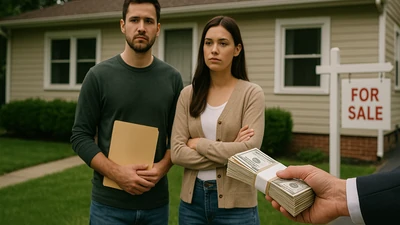For years, we’ve been fed a simple idea: Build more homes and prices will go down. It sounds logical. It feels like Econ 101. But here in the real world — where corporate buyers wire cash faster than a family can get pre-approved — that old logic doesn’t always survive contact with modern markets.
Yes, overbuilding can nudge prices down. Flooding a market will soften demand. But let’s be honest: with institutional buyers and investors treating single-family homes like a permanent asset class, simply “adding supply” isn’t the silver bullet it used to be.
Today’s market reality is different. Housing is no longer just shelter. It’s a national investment vehicle.
Yes, overbuilding can nudge prices down. Flooding a market will soften demand. But let’s be honest: with institutional buyers and investors treating single-family homes like a permanent asset class, simply “adding supply” isn’t the silver bullet it used to be.
Today’s market reality is different. Housing is no longer just shelter. It’s a national investment vehicle.
Why New Supply Isn’t Moving Prices Like It Used To
In the past, builders over-delivered, inventory climbed, and prices cooled. But that model assumes the only buyers are local families who need a place to live.
Fast-forward to 2025:
- Corporate buyers scoop up inventory in bulk the moment it hits the MLS — or before.
- Cash investors outbid traditional buyers without blinking.
- Short-term rentals and long-term holds are competing directly with owner-occupants.
- Demand is permanently inflated by non-resident buyers.
So yes, supply still matters — but demand has fundamentally changed. The playing field is no longer level, and traditional supply-and-demand outcomes aren’t guaranteed.
Pull Quote
“We’re no longer in a housing market — we’re in a housing marketplace. And the big players aren’t trying to find a home. They’re trying to buy the market.”
Can Mortgage Amortization Be Improved to Lower Costs?
Absolutely — and this is where the conversation gets interesting.
People tend to think mortgage costs are fixed: 30-year amortization, pay it down, pay the interest, that’s it. But the structure of the mortgage itself is a powerful cost lever.
There are ways to restructure amortization to reduce the total cost of ownership:
1. Front-Loaded Principal Systems
Instead of paying mostly interest for the first decade, homeowners could pay more principal early.
This:
This:
- Lowers long-term interest paid
- Builds equity faster
- Reduces the risk of being underwater in a downturn
Countries like Canada and Australia already use versions of this.
2. Adjustable Amortization Schedules Based on Income Growth
If a buyer’s income grows over time, the payment schedule can flex with it.
Not a gimmick — a financial model that reflects real human earnings curves.
3. Interest-Reduction Incentives for Building New Homes
If policymakers really want to lower costs, this is how you do it — with targeted incentives that reward principal reduction.
4. 40-Year and 50-Year Mortgages
A longer timeline spreads costs out and lowers monthly payments — but it does not solve affordability.
It just makes the monthly bite smaller while total interest grows dramatically.
So the answer is: Yes, amortization can absolutely be improved. But we need innovation, not recycled policy.
2. Adjustable Amortization Schedules Based on Income Growth
If a buyer’s income grows over time, the payment schedule can flex with it.
Not a gimmick — a financial model that reflects real human earnings curves.
3. Interest-Reduction Incentives for Building New Homes
If policymakers really want to lower costs, this is how you do it — with targeted incentives that reward principal reduction.
4. 40-Year and 50-Year Mortgages
A longer timeline spreads costs out and lowers monthly payments — but it does not solve affordability.
It just makes the monthly bite smaller while total interest grows dramatically.
So the answer is: Yes, amortization can absolutely be improved. But we need innovation, not recycled policy.











